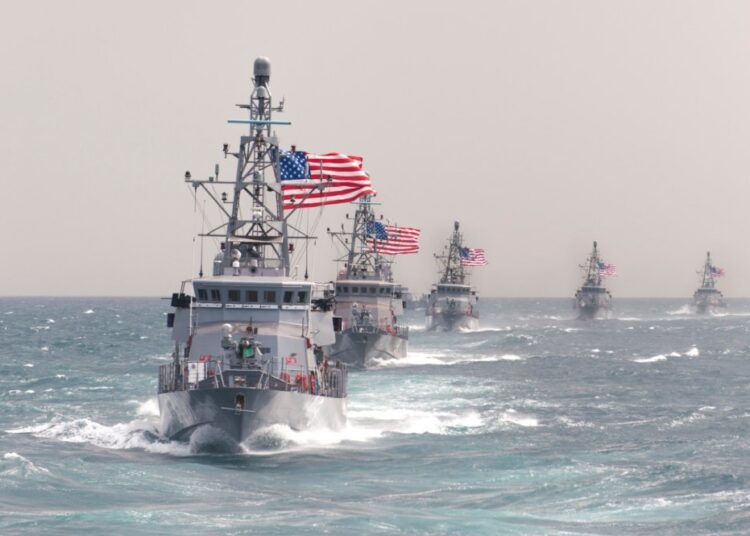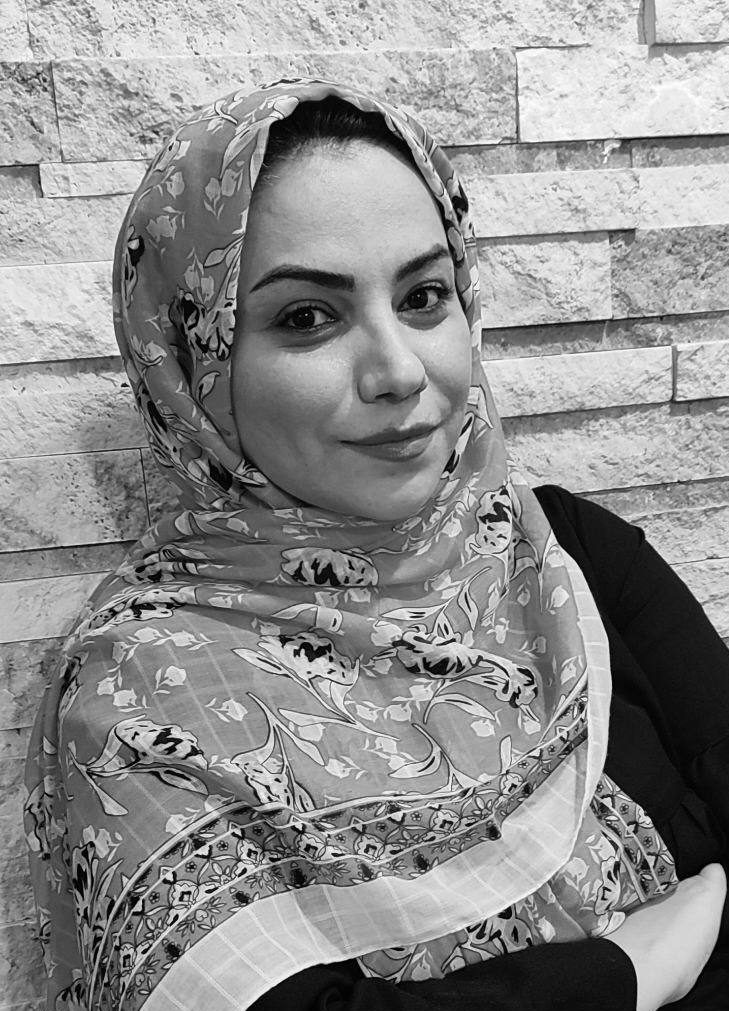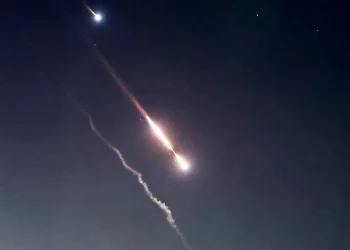The emergent dynamic now observed in the region, one impregnated with a pervasive fear that an escalating militarization encapsulated by the robust strategies and tactical maneuvers of the power players, just might result in an intricate puzzle of regional security. The stakes are high, and the impacts of this development could pose significant, unpredictable challenges to each country directly involved.
By Afifeh Abedi
For days without end, the proliferate media reports documenting the surge in America’s military presence in the Persian Gulf have dominated the headlines. In what appears as a reactive modus operandi to the perceived US threats, Iran has amplified its security apparatus and defensive strategies within the region. While the United States rekindles the flames of instability and tension, casting a dark shadow of insecurity over the Persian Gulf yet again, it becomes necessary for Iran to persist in its diplomatic efforts toward nurturing a framework for collective security within the region.
Over the past few years, Iran’s clarion call for the inception of a “Regional Dialogue Forum” in the Persian Gulf emerged persistently. Merely two months ago, before the initiation of another US military campaign in the region, Iran’s Foreign Minister Hossein Amirabdollahian extended Iran’s proposition to form a cooperative regional forum during his diplomatic visits to Persian Gulf neighbors. Under the previous government in Tehran, Iran tendered three propositions aimed at bolstering the security within the Persian Gulf, including a regional dialogue forum, a non-aggression pact, and the Hormuz peace initiative.
Yet, a poignant question looms: Why have these propositions been met with a less than enthusiastic response from the region’s countries? Why do adequate discussions for the establishment of an endemic security system within the region seem elusive? What form of dialogue is required to gestate a viable regional security mechanism?
Prevalent Barriers and Challenges
The burgeoning tension, potential conflict, and associated instability within the Persian Gulf are hardly novel concerns. From the fifteenth century, when the Portuguese first made their famous arrival, the Persian Gulf has been the fervent focus of foreign powers, and a host to several conflicts, thereby stalling the political-economic progression of the countries within the region.
Although the regional climate appeared volatile before the US’s recent provocations, the gradual mellowing of relations between Iran and Saudi Arabia had birthed optimistic prospects for political-economic progression and institutional cooperation. Nonetheless, the freshly emerging dynamic instils fear that a power-centric confrontation may precipitate a new security dilemma, one that could prove onerous and multilayered for every regional country. An ensuing competition could potentially whip up existing inter-regional rivalries, thereby jeopardizing the overarching security of the entire region.
Interestingly, contrary to past circumstances, the Persian Gulf stands on the precipice of a positive shift. Despite stark differences, countries within the region demonstrate deeper mutual understanding and heightened propensity for dialogue. They’ve come to a consensus that establishing a stable security apparatus within the Persian Gulf is paramount to ensuring the continuation of each nation’s interests and developmental initiatives. These countries have exhibited relative political stability over the recent years, and their developmental plans hinge significantly on suppressing tensions with their neighbors.
One finds oneself pondering — what is the formidable obstacle impeding initial strides toward a holistic agreement for an indigenous blueprint for Persian Gulf security? It would appear that the answer echoes back to the destabilizing, interference-laden role out-of-region forces have enacted in the Persian Gulf. There is ample evidence suggesting that the swell in US military presence in the region bears no connection to the security apprehensions of regional countries. Undeniably, attempts by Washington to link Iran to American-induced tensions are obstructive toward steps aimed at defusing the situation between the Persian Gulf neighbors. While Iran has brokered a degree of political understanding with regional countries, America’s endeavors strategically mold Iran into a common regional threat by inciting military tension.
Iran’s perspective on security model for Persian Gulf
The proposed paradigms for Persian Gulf security can be conceptually segregated into two clusters — ones that are established and those that are based on consensus. Those establishment-based models emerge from the political and military tug-of-wars in the region, comprising three forms: 1 – Unipolar regional hegemony, 2 – Bipolar/multipolar regional power balance, and 3 – Veto system of regional states. These modes that have historically held sway over the Persian Gulf tend to offer a breeding ground for meddling by foreign actors and safeguard the interests of specific regional entities. Each of these patterns inherently harbors a degree of unease and disruption. Conversely, a regional collective security model shaped by the consensus of all regional countries can guarantee the safety and interests of all the players involved.
The model advocated by Iran aligns accurately with the principles of collective security and mutual agreement. Currently, the Persian Gulf Cooperation Council comprises six countries within the Persian Gulf region. However, Iran envisions a comprehensive model encompassing all Persian Gulf neighbors, inclusive of the northern Iran and Iraq, and the southern countries of Kuwait, Saudi Arabia, Bahrain, Qatar, United Arab Emirates, and Oman.
The salient principles espoused by Iran, including the acceptance of non-aggression and existing borders, shunning interference in internal affairs, agreeing on a united stance on augmenting the military presence of extra-regional actors, and refraining from participation in any foreign force actions that may incite tensions, mark significant characteristics of a viable, accessible security model for the region.
An effective strategy for collective and endogenous security paradigm
Under the prevailing conditions, it seems utopian to pontificate about a security model that will lead to understanding and agreement among all regional and international actors. Achieving consensus on halting the arms race and resolving all overarching political and geopolitical disputes appears a distant and complicated reality, a fact which only fuels existing skepticism. Nevertheless, it is more practical to embrace a security model predicated on interplay and engagement, one that graciously accommodates differences and ordinary competition while engendering economic and informational cooperation with bilateral or multilateral benefits.
To bring the regional collective security model to fruition, two conceivable steps emerge; the first phase involves sustainable bilateral or multilateral talks and consultations, whose objective is to foster convergence and alignment of political-economic and security stances. Therefore, it’s proposed that Iran should persevere in its regional consultations and resist adopting a passive stance against America’s aggressive and anti-Iranian propaganda in the region.
The second phase necessitates the meticulous crafting an embryonic blueprint and corresponding model, culminating in the establishment of a bilateral or multilateral security conglomerate expressly designed for the Persian Gulf. Over the long term, this could potentially lead to an emergent pattern of intertwining and far-reaching security collaboration within the region. This pivotal stage calls for, at minimum, rapport and mutual understanding with one or two neighboring countries within the Persian Gulf. Iran is well-positioned to broach the notion of propelling this security commission into existence with Oman, Qatar, and perhaps even Saudi Arabia.
Indeed, to catalyze the indigenous security model within the Persian Gulf, a level of dialogue and the collaborative exchange of initiatives among some countries within the region prove not only preliminary, but fundamental steps toward a shift to effective regional collective security. This model, through strategic, phased trust-building, could feasibly attain the long-term objective of a region unencumbered by foreign interferences.
Agreement on the degree of foreign-force participation in the Persian Gulf, including a mutually accepted timeframe for the movement of foreign military vessels and naval squadrons, comprise additional milestones on the pathway toward the localization of Persian Gulf security. These goals, while ambitious, can nonetheless be eventually achieved.
However, overall, the fundamental issue worthy of serious reflection is this – if the present opportunity slips through our fingers, the region could once again find itself entangled in a web of international competition, fueled by the United States’ combative inclinations, leading to the formulation of a complex regional security conundrum. Dialogue surrounding the regional model will then become exceedingly challenging to sustain.
The time is now for broaching this crucial question with all Persian Gulf neighbors – given the wealth of historical experiences, the substantial resources invested and trials overcome, why should the region once again capitulate to the whims of warmongering tactics propelled by foreign powers?






